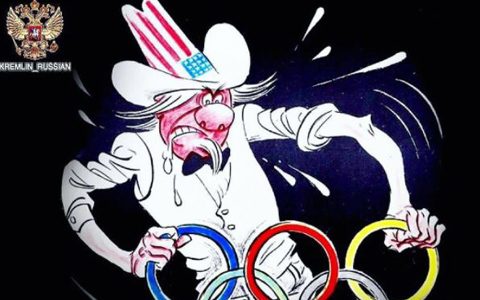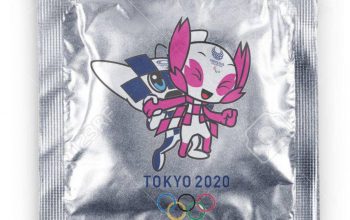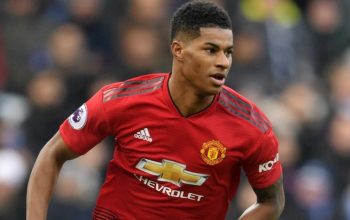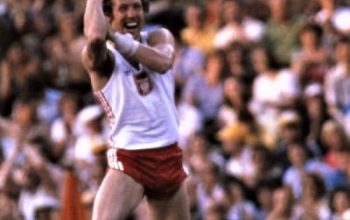Governments behind the Iron Curtain were justifiably fearful of public protests, which could threaten their legitimacy. And if such protests go out of hand, governments could fall. After the death of Stalin in March 1953, and the terror that bore his name receded across the communist world, the natives ventured to protest, or even go further. There were uprisings in East Berlin (1953), Poznań in Poland (1956), Hungary (1956) and Prague (1968).
This fear was ever-present, as communist governments employed armies of security police to snuff out the merest hint of protest. There was, however, one place that protesters were relatively safe venting their anger at communism, and in the case of satellite countries, the oppression of their countries by the USSR. It was sport. According to Russia’s leading sports historian, Mikhail Prozumenshchikov “Sports were a barometer of public sentiments, an indicator that bore infallible witness to the current level of social tensions.” Examples abound.
In February 1954, during an international freestyle wrestling contest in Hungary, every decision that favoured a Soviet competitor was met with jeering and anti-Soviet insults. Fortunately, the Soviet wrestlers did not understand Hungarian and so they did not react to the verbal abuse.
This was not an isolated incident. The Soviets accused Hungarian judges and referees, officiating at major international competitions, of being in in cahoots with officials from the capitalist countries. To resolve the hostility between the two countries, Soviet sports minister, Nikolai Romanov, confronted his Hungarian counterpart to complain that such behaviour risked the “fraternal friendship” between their two countries. Rather than improve, the situation worsened. As a result, the matter was referred to the Kremlin, which issued Decree on Instances of the Uncharitable Attitude Towards Soviet Athletes in Hungary, in September 1954. It had little effect.
Hungary was not the only Iron Curtain country hostile to its Soviet overlords. In the spring of 1954, there was an international chess tournament in the Romanian capital, Bucharest. The favourites were the Soviet players, Viktor Korchnoi, Ratmir Kholmov, Semion Furman, and Rashid Nezmetdinov. According to a TASS reporter, wins by the Soviet players were met with polite applause. When the Swede, Gideon Stahlberg, or Belgian, Alberic O’Kelly de Galway, won a match they were greeted with loud clapping, as did victories by players from Iron Curtain countries.
Hostility towards the USSR increased in Poland after the uprising in September 1956, as protests sublimated into uncivil behaviour at sporting events. Soviet athletes competing in Poland were greeted by whistles and anti-Soviet slogans, and as they left the playing field they were pelted by bottles.
At soccer World Cup qualifiers, played in 1957, the Soviet team beat Poland in Moscow. The second and deciding game was to be played in Warsaw, but communist officials were so worried about protests that they moved the game to Chorzów. The town was chosen because of it was small and unlikely to attract a large number of spectators. Also, it was a mining town and the local proletariat were considered to be loyal communists. During the match, played before a capacity crowd, Soviet players faced insults and missiles aimed at them. Whenever a Polish player tripped or “accidentally” kicked his Soviet opponent, cheers erupted from the stands. The game ended in a 2:1 victory for Poland. With each team winning one game each, by convention, the decider would be held in a neutral country. This led to a major disagreement. The USSR wanted the final game played in Prague, Sofia, Bucharest, or East Berlin. The Poles wanted the game played in the West, either Vienna or Stockholm, although they were will to compromise on Belgrade. At this point the Kremlin intervened, claiming that “the Polish Soccer Federation’s refusal to accede to the suggestion of playing for the world championship in any of the people’s democracies will be interpreted abroad in a spirit of hostile anti-Sovietism.” And so it was. After some strong-arming of the Polish government, the game was played in East Germany, in the city of Leipzig. For the USSR the game ended well. It won and went on to play in the finals, but was knocked out by Sweden in the second round.

Whenever Czechoslovakia ice hockey players faced off against Soviet teams, tempers flared, followed by fights. At the 1956 winter Olympic Games, several Soviet players were seriously injured. Perhaps the worse incident was at the World Ice Hockey Championship in Vienna in 1967, when a brawl broke out between the Soviet and Czechoslovak players. After the USSR emerged the victors, the Czechoslovak players refused to shake hands and Czechoslovak spectators jeered from the stands.
Later that year, in the second round of soccer’s European Cup Winners’ Cup, the game between Torpedo Moscow and Spartak Trnava ended in a brawl. Spectators shouted anti-Soviet slogans, chanted profanities at the Soviet players, and hurled bottles and rocks at them throughout the game.
As a result of these incidents, the Soviet Embassy in Prague recommended the “temporarily halting encounters between Soviet and Czechoslovak athletes within Czechoslovakia in high-contact sports that bring about an excessively high-strung and unobjective spectator reaction.”
A year later, Soviet tanks were in Prague to put down an uprising, which had been presaged on the sporting field for decades.
After the Prague Spring uprising was crushed, sport administrators showed that they were willing to stand up to the Soviet occupation. In early 1969, Czechoslovak sports federations broke off all contacts with the Soviet Union, Hungary, Poland, East Germany, and Bulgaria “until such time as the foreign troops leave Czechoslovak territory.”
Sport also provided the public with an opportunity to vent their feelings on the occupation. After Czechoslovakia beat the USSR in the ice hockey world championship in Sweden in March 1969, Czechoslovaks took to the streets to celebrate: but also to protest. There were torchlight parades and marches in all large towns and cities where Soviet troops are posted. For example, in the city of Mladá Boleslav (40 km. southeast of Prague), a mob stormed the gates of the Soviet base that housed the 275th Motorized Rifles Regiment. Rocks were thrown, windows broken and at least two Soviet servicemen sustained minor head wounds. Protesters chanted: “Russians, go home,” and hung a black banner in front of the base’s security checkpoint.
Even in Moscow, in the national football league, sport provided a way for ordinary citizens to protest against the coercive arms of the regime: the security police and army. Both had their own teams: Dynamo and TsDKA respectively. At games, spectators often hurled insults at them: “kill the cops” or “kill the soldiers.” To contain such protests, secret police and army officers were given tickets to the first few rows of the stadium, in the hope that their presence, and they were all wearing their uniforms, would intimidate hostile spectators. It didn’t as people felt safe at sporting events. After all it would be “unsporting” to arrest fans for abusing the opposing side.
For communist regimes, lacking the ability to provide their populations with adequate supplies of bread, they could only afford circuses, in the form of competitive sport, and these became safe havens for political protests.



